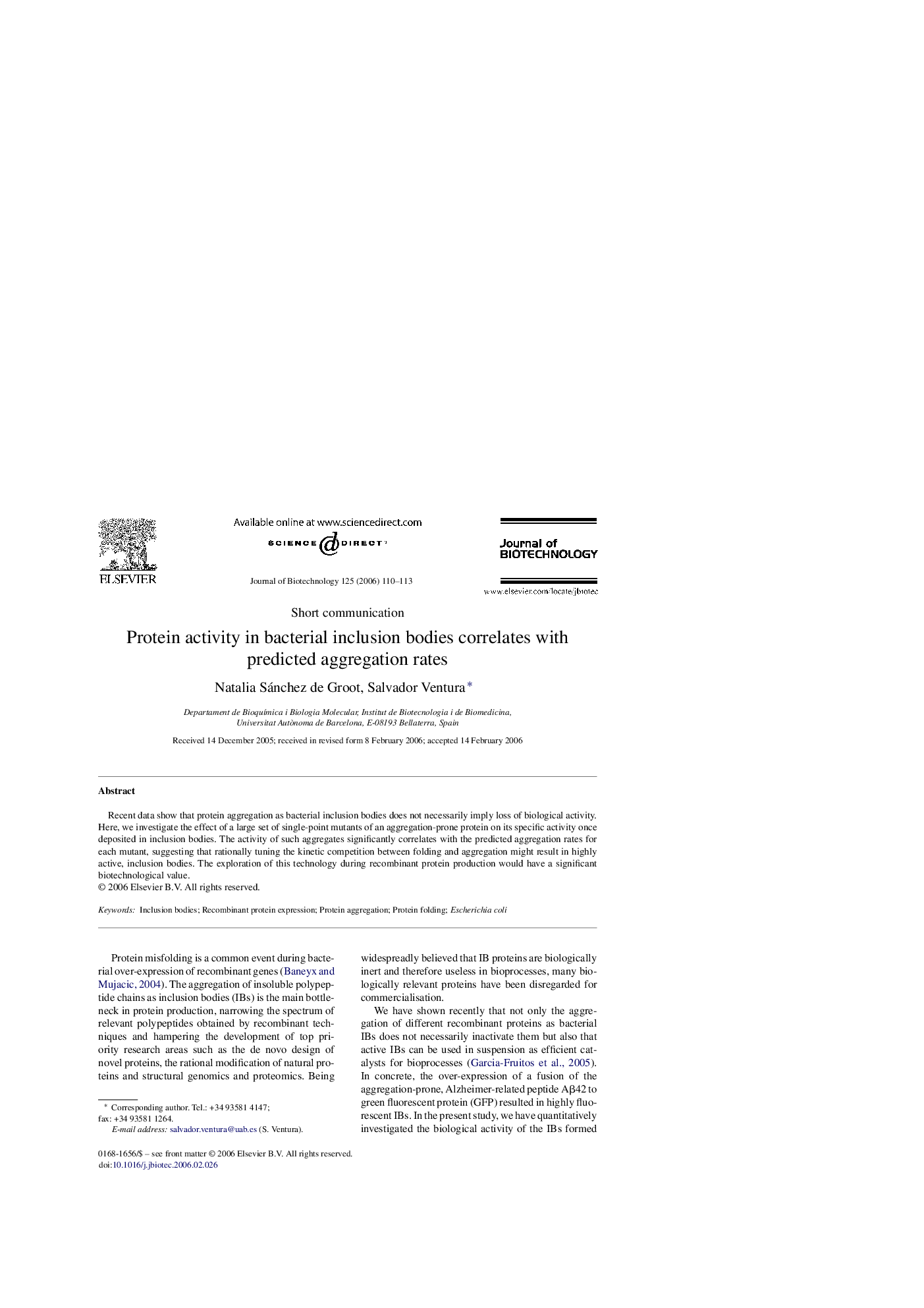| Article ID | Journal | Published Year | Pages | File Type |
|---|---|---|---|---|
| 25242 | Journal of Biotechnology | 2006 | 4 Pages |
Abstract
Recent data show that protein aggregation as bacterial inclusion bodies does not necessarily imply loss of biological activity. Here, we investigate the effect of a large set of single-point mutants of an aggregation-prone protein on its specific activity once deposited in inclusion bodies. The activity of such aggregates significantly correlates with the predicted aggregation rates for each mutant, suggesting that rationally tuning the kinetic competition between folding and aggregation might result in highly active, inclusion bodies. The exploration of this technology during recombinant protein production would have a significant biotechnological value.
Keywords
Related Topics
Physical Sciences and Engineering
Chemical Engineering
Bioengineering
Authors
Natalia Sánchez de Groot, Salvador Ventura,
